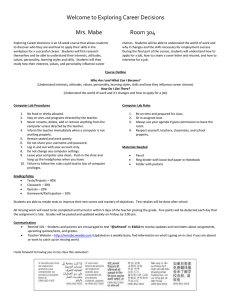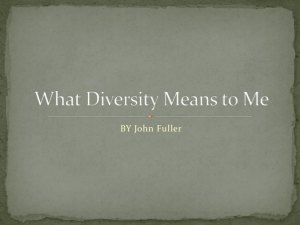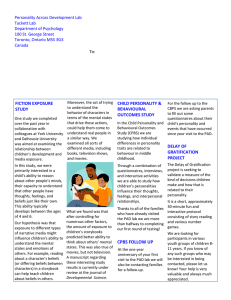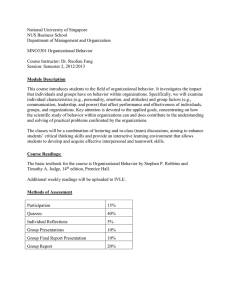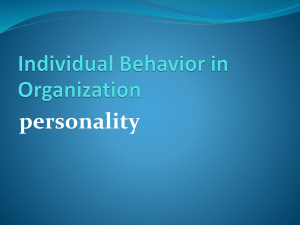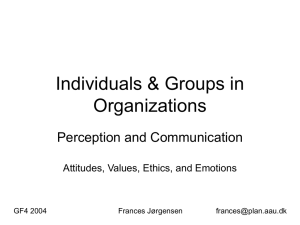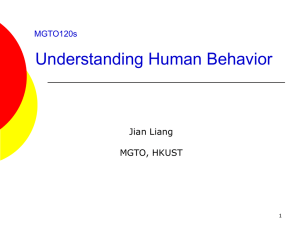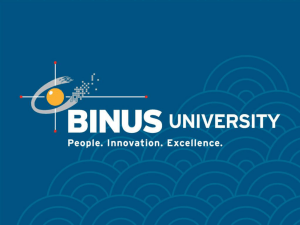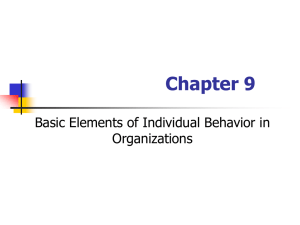Chapter 4
advertisement
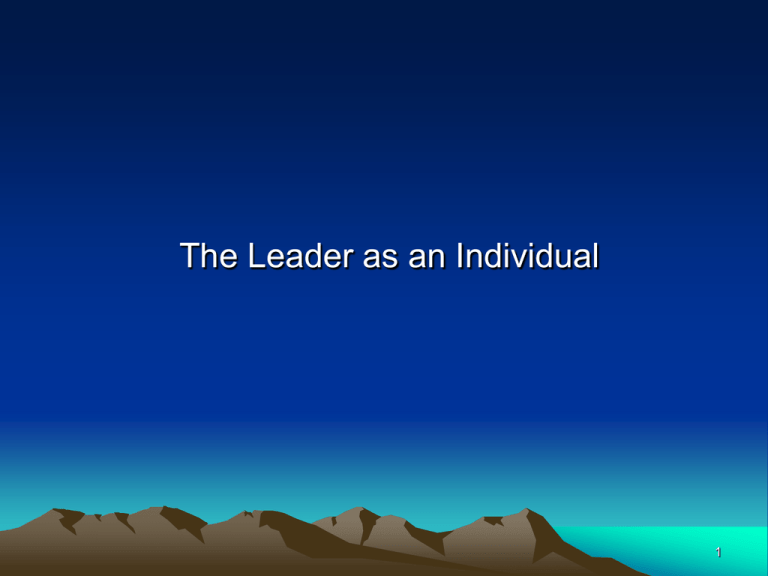
The Leader as an Individual 1 Chapter Objectives • Identify major personality dimensions and understand how personality influences leadership and relationships within organizations. • Clarify your instrumental and end values, and recognize how values guide thoughts and behavior. • Define attitudes and explain their relationship to leader behavior. • Recognize individual differences in cognitive style and broaden your own thinking style to expand leadership potential. 2 Chapter Objectives (contd.) • Practice aspects of charismatic leadership by pursuing a vision or idea that you care deeply about and want to share with others. • Apply the concepts that distinguish transformational from transactional leadership. 3 What people want in a Leader • Integrity -- honesty • Trust • Job knowledge • People skills 4 Personality The set of unseen characteristics and processes that underlie a relatively stable pattern of behavior in response to ideas, objects, and people in the environment 5 Ex. 4.1 Quiet, withdrawn, unassertive The Big Five Personality Dimensions Low Extroversion High Outgoing, energetic, gregarious Warm, considerate, good-natured Aloof, easily irritated Low Agreeableness High Impulsive, carefree Low Conscientiousness High Moody, tense, lower selfconfidence Narrow field of interests, likes the triedand-true Low Low Emotional Stability Openness to Experience High High Responsible, dependable , goal-oriented Stable, confident Imaginative, curious, open to new ideas 6 Personality Traits • Locus of Control – Defines whether a person places the primary responsibility for what happens to him or her within himself/herself or on outside forces • Authoritarianism – The belief that power and status differences should exist in an organization 7 Values • Fundamental beliefs that an individual considers to be important, that are relatively stable over time, and that have an impact on attitudes and behavior. • End Values – Sometimes called terminal values, these are beliefs about the kind of goals or outcomes that are worth trying to pursue. • Instrumental Values – Beliefs about the types of behavior that are appropriate for reaching goals. 8 Attitude • An evaluation (either positive or negative) about people, events, or things. • Self-Concept – The collection of attitudes we have about ourselves; includes self-esteem and whether a person generally has a positive or negative feeling about him/herself. 9 Theory X and Theory Y Theory X: the assumption that people are basically lazy and not motivated to work and that they have a natural tendency to avoid responsibility Theory Y: the assumption that people do not inherently dislike work and will commit themselves willingly to work that they care about 10 Cognitive Style How a person perceives, processes, interprets, and uses information 11 12 Ex. 4.4 A Upper left B Lower left Hermann’s Whole Brain Model Logical Analytical Fact-based Quantitative Organized Sequential Planned Detailed Holistic Intuitive Integrating Synthesizing Interpersonal Feeling-based Kinesthetic Emotional D Upper right C Lower right 13 Myers-Briggs Type Indicator (MBTI) Personality test that measures how individuals differ in gathering and evaluating information for solving problems and making decisions 14
